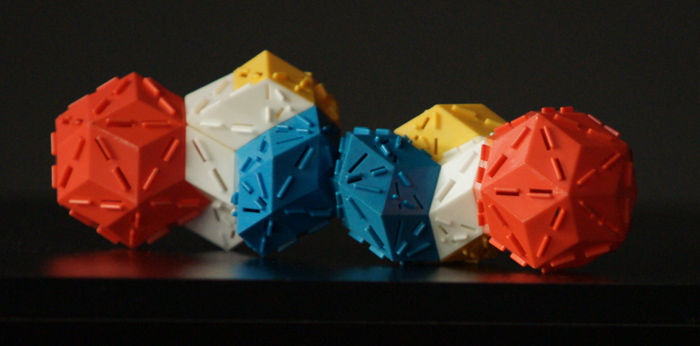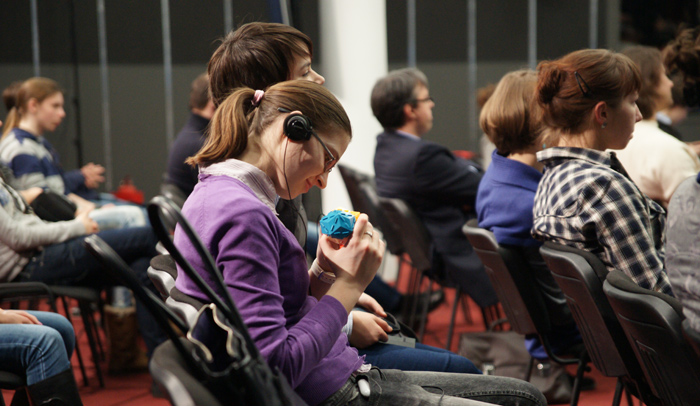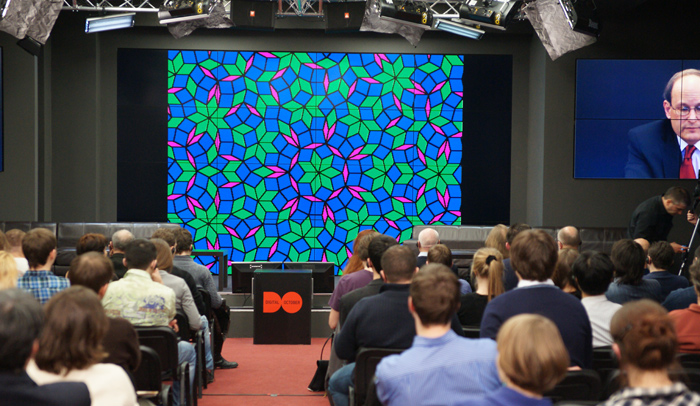Quasicrystals - the pride of Chukotka

Already two times the Nobel Prize is given for substances that should not be. The first time it was graphene, in which no one believed, the second time - quasicrystals , which, according to the classical theory, cannot exist at all.
They can not, but they persist.
')
I think I don’t need to tell about the practical use of crystals. Quasicrystals have a similar field of application, plus they have two important properties - firstly, they are able to strengthen composite materials (for example, to obtain superstrong steels — needles for eye operations), and, secondly, when cooled, the quasicrystal becomes an insulator, and when heated - conductor. Naturally, there are great prospects in LED technology and in general in everything that begins on “nano” in a good sense of the word.
Last week, at Digital October, there was a lecture by Paul Steinhardt, a scientist who traveled to Chukotka in search of natural quasi-crystals and went through a whole detective story to get samples.
But let's start over.
What is a quasicrystal?
In fact, it is a complexly “packed” substance with a regular structure. The difference from ordinary crystals is that this structure should not exist for a whole list of reasons. It has already been proven that symmetry of second, third, fourth, and sixth order is possible, and for other cases, it is, in general, impossible. In any case, they thought so before. For example, the usual structure of the carbon lattice gives diamond. The hexagonal structure gives graphite, which has different properties.
On the other hand, it is impossible, for example, to pave a plane with regular pentagons, in the same way it was considered impossible for decagons. True, in 1982, Shechtman (who won the Nobel Prize in Chemistry in 2011) showed that the previous ideas were wrong.

Components of the quasicrystal on the model
How do you pack the substance so tightly?
Using different structures. Roughly speaking, these are not only pentagons, but also other forms that occur at different frequencies. And the ratio between these frequencies is not a rational number, that is, it cannot be described as a relationship of two integers. Accordingly, the term "quasicrystals", or "quasiperiodic crystals", or "quasiperiodic solids" appeared in this way.

Quasicrystal assembly
Since 1984, more than 100 different quasicrystals have been obtained in laboratories, but it was believed that in nature the formation of such substances is simply impossible, since the structure is extremely unstable. And now the most fun - Steinhardt found just a natural sample.

Another carpet
Where did he find him?
In one local Russian museum outside the main catalog. The sample "Khatyrkit" was found on the banks of the Khatyrka River, in the autonomous region of Chukotka on the Koryak Highlands.
And with this piece we have been trying to work for several years. There already began the winter of 2008. In general, we cut the available sample. Very thin sections, as you see, of a half-micrometer. And we expected that we would get access to good spectrometers and good microscopes. But we were told that they were already booked by other researchers for the next three months. But I was able to negotiate with the director of the X-ray center at the university, and we came together to the laboratory at five in the morning on Christmas. We could not forgive the family at that time, but we understood that if we did not go on that day, then we would have to wait three more months. And I was struck by what we saw. Because when we placed this sample in the electron microscope, we immediately saw the diffractogram. Absolutely fantastic, almost perfect diffractogram of a real quasicrystal.
How did this structure appear inside the stone?
Sex carried the data to geophysicists, who explained that this was impossible, because the alloy of aluminum, copper and iron had to be oxidized in natural conditions. Actually, physicists tried to explain that the find is not a natural formation, but a piece of man-made debris left over from the Russian refinery or nuclear reactor (well, you know, they are there at every step). Paul had two theories: about the formation of material at great depths (where there is not very much oxygen) or in space (where it is even less). It was necessary to find more samples in order to verify the natural origin of quasicrystals.

Assembly and disassembly
What's next?
Next - a year and a half of searches, a detective with the search for members of the first expedition, access to one person from them, hours in laboratories, confirmation of the theory of the meteoric origin of materials - and equipment of the second expedition to Anadyr, where Hatyrkit was found.
The first analysis data showed that we really picked up very good materials of meteorite origin. You see, in the center of this stone is such a brilliant sample, a piece that completely corresponded to the chemical composition we were looking for and had a diffractogram corresponding to a quasicrystal. And the mineral that we found, we called icosahedron, because it had a diffractogram that fully corresponded to the correct icosahedral lattice. Of course, this our expedition and the fact that we personally dug up all these samples, added credibility to our research in the eyes of the scientific community. If you show these data to specialists in meteorites, they will immediately tell you what it is. This is a typical example of a meteorite type CV3, or carbonaceous chondrite. And in the center of this chondrite you see a brilliant piece, which we have never found in nature before. It is difficult at this stage to decide when this quasicrystal was formed. Either he has the same age as the surrounding breed, about 4.5 billion years old, or he has been formed ... But we are now digging this topic. We now proceed from the fact that this quasicrystal arose at the dawn of the Solar System, many billions of years ago, when meteorites collided. We assume that this meteorite fell into the Khatyrka basin relatively recently, maybe about 10 thousand years ago. Just during the last ice age. Just when, along this stream, clay rocks descended downwards with some kind of ice masses. We continue our work, I hope that we will open some more secrets.

Discussion: leading Russian experts in the field
References:
- Lecture in Russian and English (by the way, English is very clean and quite conversational - you can watch it, everything is clear);
- Quasicrystal on Wikipedia (and its industrial application);
- Paul Steinhardt page on Princeton site;
- The news in the "Rossiyskaya Gazeta" from the beginning of January 2012.
Source: https://habr.com/ru/post/139469/
All Articles